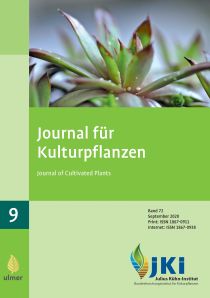Nickel toxicity in <em>Brassica rapa</em> seedlings: Impact on sulfur metabolism and mineral nutrient content
DOI:
https://doi.org/10.5073/JfK.2020.09.03Keywords:
toxic metals; heavy metals; nickel; sulfur; thiols; glutathione; mineral compositionAbstract
Throughout the world anthropogenic activity has resulted in enhanced soil nickel (Ni2+) levels, which may negatively affect plant productivity. The physiological background of Ni2+ phytotoxicity is still largely unclear. Ten-day exposures of Brassica rapa seedlings to 1, 2 and 5 μM NiCl2 resulted in strongly enhanced tissue Ni levels, a decreased biomass production and leaf chlorosis at ≥ 2 μM Ni2+. At 5 μM Ni2+ plant growth was completely halted. Ni toxicity occurred when the content of the shoot exceeded 1.0 μmol g–1 dry weight and that of the root, 23 μmol g–1 dry weight. Ni2+ exposure at ≤ 2 μM only slightly affected the mineral nutrient content of both shoot and root. Hence, Ni2+ exposure hardly affected the sulfur metabolite content of the plant. At ≥ 1 μM Ni2+ the total sulfur content of the root was only slightly lowered, which could fully be ascribed to a decreased sulfate content. Moreover, the water-soluble non-protein thiol content of both shoot and root was only enhanced at 5 μM Ni2+. From these results it was clear that sulfur metabolism was unlikely to be directly involved in the Ni2+ tolerance mechanisms of B. rapa.
Published
Issue
Section
License
The content of the journal is licensed under the Creative Commons Attribution 4.0 License. Any user is free to share and adapt (remix, transform, build upon) the content as long as the original publication is attributed (authors, title, year, journal, issue, pages).
The copyright of the published work remains with the authors. The authors grant the Journal of Cultivated Plants, the Julius Kühn-Institut and the OpenAgrar repository the non-exclusive right to distribute and exploit the work.







